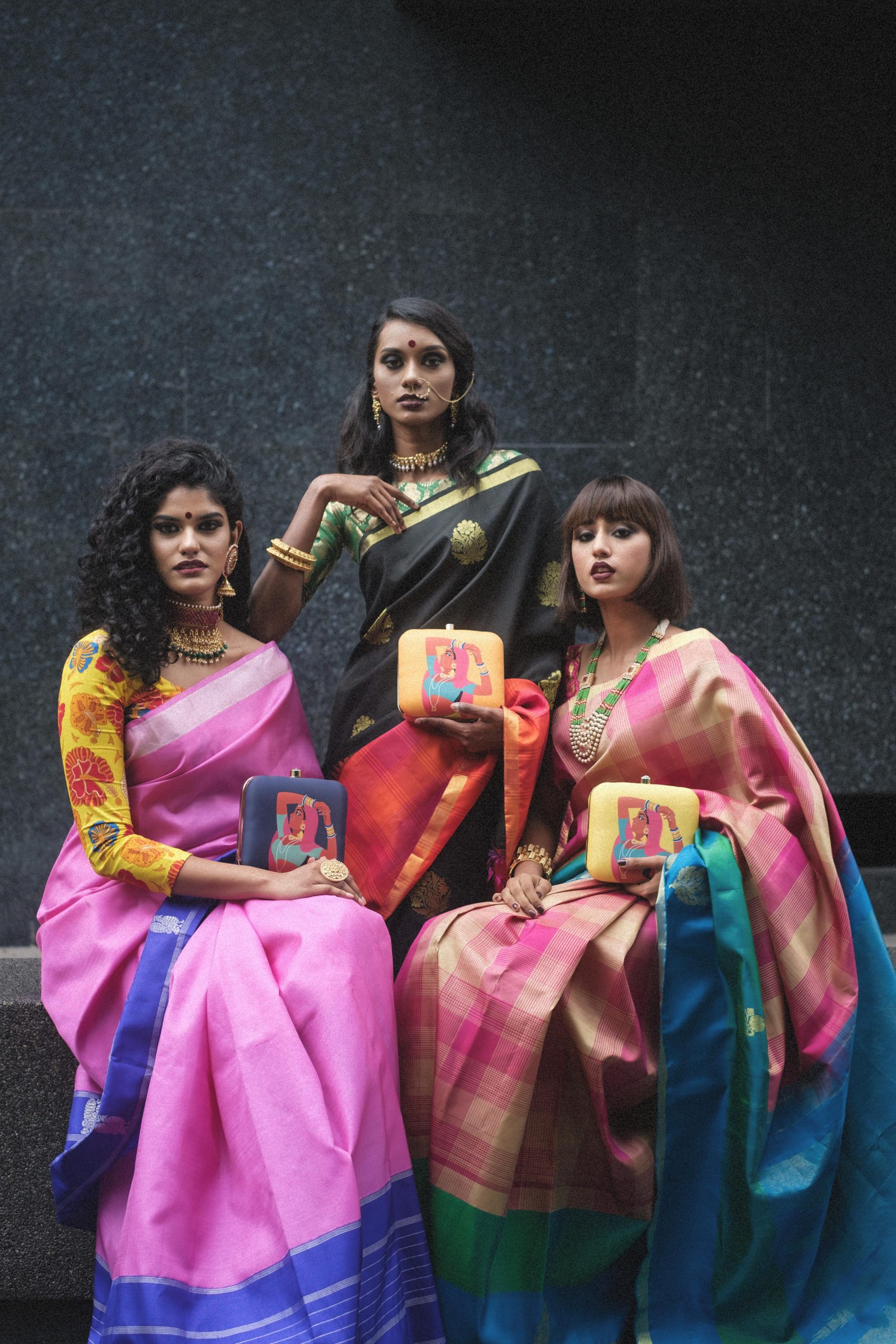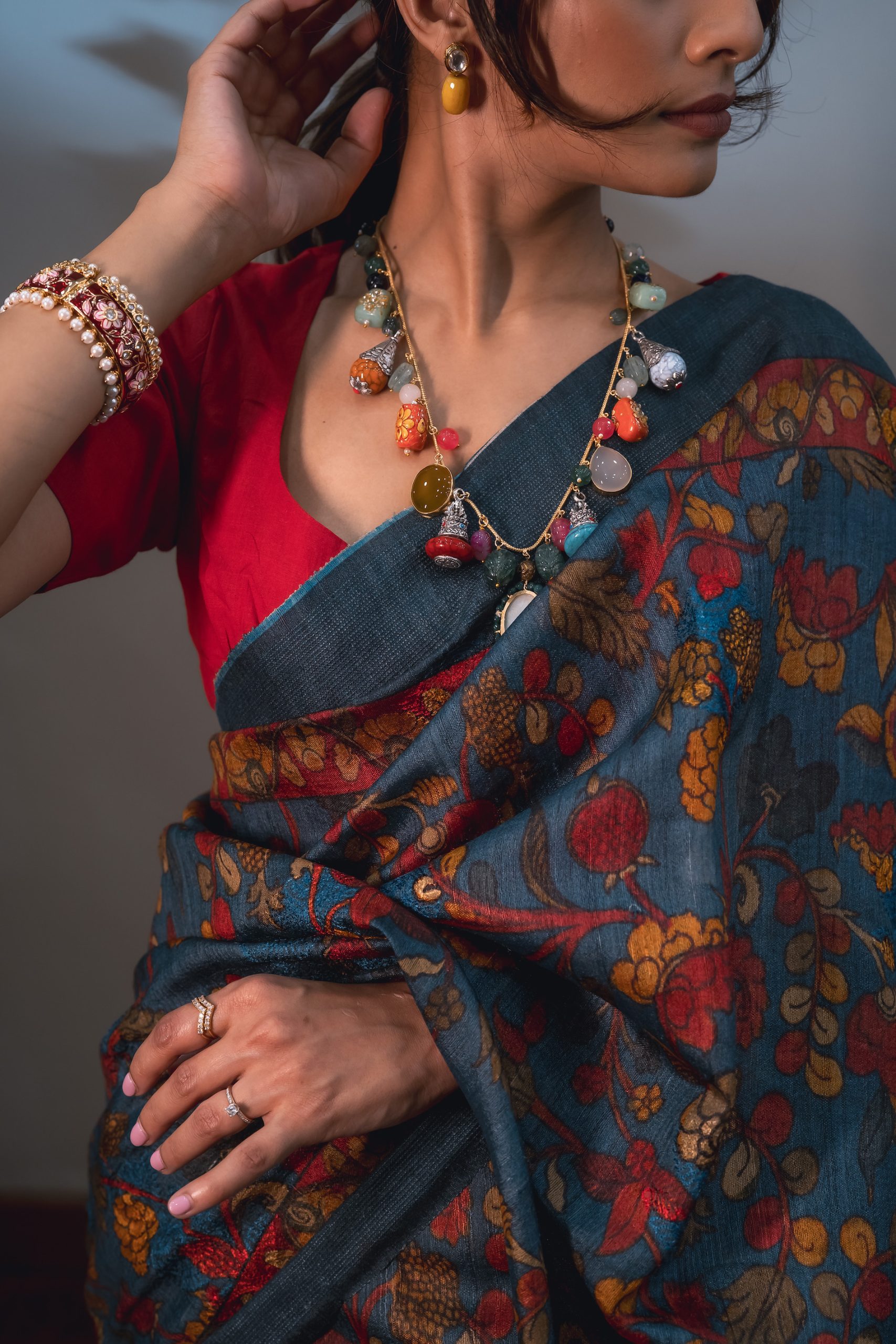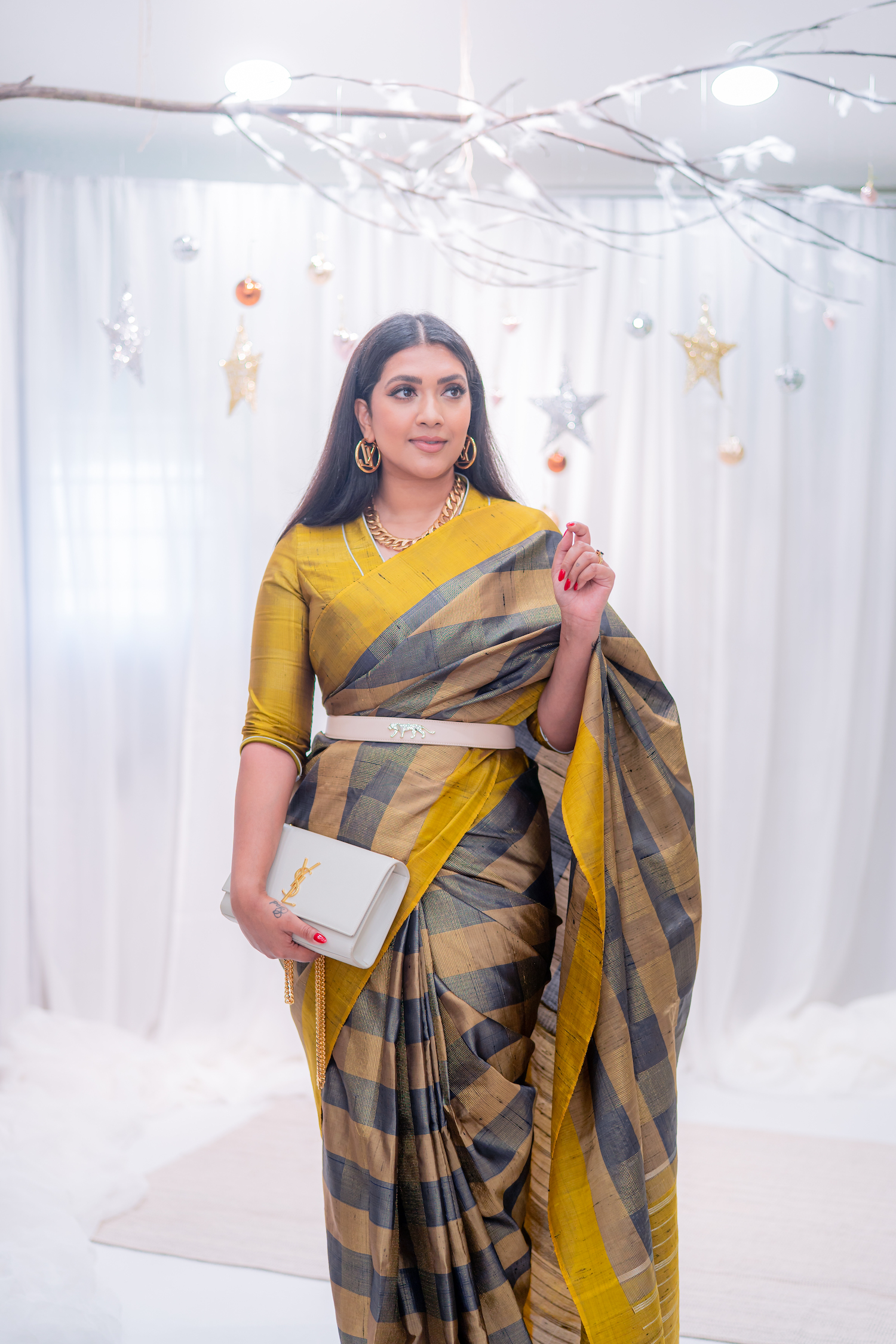Grace in Every Fold
Step into a world where tradition meets luxury. Explore the artistry, craftsmanship, and timeless beauty behind the finest sarees, curated for the modern woman with a classic touch.

Pattushastra offers an impressive variety of sarees, ranging from everyday wear to opulent bridal pieces. The boutique takes pride in its wide array of choices, including classic silks, lightweight cottons, and trendy georgettes. The Banarasi sarees stand out in their collection, with intricate zari work and fine brocade that instantly add a touch of royalty. Their Kanjeevaram sarees are equally luxurious, featuring bold temple motifs and rich, lustrous silk that make them perfect for weddings and festive occasions.
For those looking for something more casual yet elegant, Pattushastra’s selection of Bandhani and Chanderi sarees offers the right balance of tradition and comfort. The boutique also showcases some exquisite handloom pieces, giving customers access to authentic craftsmanship from various parts of Indi
Chanderi sarees offers the right balance of tradition and comfort. The boutique also showcases some exquisite handloom pieces, giving customers access to authentic craftsmanship from various parts of Indi
One of the highlights of shopping at Pattushastra is the personalized attention the staff provides. The boutique’s team is not only knowledgeable about different types of fabrics and regional styles but also attentive to individual customer preferences. Whether you’re a first-time saree buyer or a seasoned saree enthusiast, the staff takes the time to explain the story behind each piece, helping you choose sarees that complement your style, body type, and occasion. Their attention to detail and ability to offer draping advice enhances the overall shopping experience.
Pattushastra emphasizes the authenticity of its products, ensuring that each saree is crafted with care and precision. Their close ties with weavers and artisans from India ensure that their collection remains rooted in tradition, with a focus on preserving the heritage of handloom textiles. The boutique also sources exclusive designs, making it a treasure trove for customers who appreciate unique, one-of-a-kind sarees.

In addition to sarees, Pattushastra offers a range of traditional Indian accessories, including blouses, jewelry, and dupattas, allowing customers to complete their look in one place. The boutique’s selection of intricately embroidered blouses is particularly worth mentioning, as they add an extra layer of sophistication to any saree ensemble.
While Pathushastra is rooted in tradition, the boutique also caters to the modern woman who seeks contemporary twists in her attire. You’ll find sarees with modern cuts, trendy prints, and innovative drapes that merge timeless elegance with a fresh, fashion-forward appeal.
For those who want to experiment with fusion wear, Pattushastra also offers pre-stitched sarees and versatile blouses, making it easier to wear this traditional garment in a more convenient and stylish way.
The boutique itself is warm and inviting, with an ambience that exudes sophistication. The spacious, well-lit interiors allow you to browse the collection comfortably, while the artful displays of sarees create a luxurious shopping experience.
Pattushastra’s price range is fairly competitive, especially considering the quality and craftsmanship of the sarees. Whether you’re shopping on a budget or looking to splurge on a statement piece, there’s something for everyone.
Pattushastra is more than just a saree boutique; it’s a celebration of Indian culture, craftsmanship, and fashion. With its extensive range of sarees, personalized service, and commitment to authenticity, the boutique has carved out a niche for itself in Petaling Jaya.
Whether you’re in search of a traditional silk saree for a wedding or a lightweight, everyday piece, Pathushastra delivers in both quality and style.
For saree lovers and anyone looking to embrace the elegance of Indian wear, Pattushastra is a must-visit. The boutique brings together the best of tradition and modernity, making it a standout in the growing saree scene of Malaysia.
The Timeless Elegance of the Saree
Indian fashion is a tapestry of tradition, history, and vibrant culture, woven together through a variety of traditional garments. Among these, the saree stands out as an iconic symbol of grace and elegance. This long, unstitched cloth has endured the test of time, spanning centuries and transcending generations to remain a quintessential part of Indian fashion. While other forms of Indian attire have evolved, the saree has maintained its prominence, celebrated for its versatility, regional variations, and rich cultural significance.

The Essence of the Saree
A saree is typically a long piece of fabric ranging between five to nine yards in length, draped in various styles over a petticoat (a long skirt) and a blouse (choli). What makes the saree unique is its ability to flatter every body type, and how it effortlessly blends tradition with contemporary fashion. The fluidity and adaptability of the saree allow it to be worn for a range of occasions, from daily wear to extravagant weddings, each time offering a different look through various draping techniques, fabrics, and embellishments.
Historical Significance
The saree’s origins can be traced back over 5,000 years, with references found in ancient Indian texts and sculptures. In the Indus Valley Civilization, both men and women draped long pieces of cloth around their bodies, indicating the earliest forms of the saree. Throughout Indian history, the saree evolved, becoming a symbol of modesty, elegance, and femininity. By the time of the Mughal era, sarees became more elaborate, with ornate embroidery and luxurious fabrics being incorporated into designs.
Draping Styles
The draping of the saree varies across India and can dramatically alter the look. The Nivi drape, popularized in Andhra Pradesh, is the most commonly worn style, where the saree is pleated at the waist and draped over the shoulder. In contrast, the Maharashtrian drape is more traditional, where the saree is wrapped around the legs like a dhoti. The Bengali drape, which involves no pleats but a sweeping pallu, offers a graceful flow to the fabric.
Other styles include the Gujarati drape, which brings the pallu to the front, and the Coorgi drape, where the pleats are tucked at the back. Each style serves as a statement of the region’s cultural identity, and some sarees are even draped to reflect the wearer’s social status or marital status.
 Regional Variations
Regional Variations
India’s cultural diversity is reflected in the regional variations of the saree. Each state or region in India has its distinct style of saree, draping techniques, and fabric choices, making the saree a living canvas for the country’s rich heritage.
Banarasi Saree: Originating from Varanasi (Banaras), these sarees are known for their rich silk fabric and intricate gold or silver brocade work, making them popular choices for bridal wear.
Kanjeevaram Saree: From Tamil Nadu, the Kanjeevaram saree is famous for its vibrant colors and heavy silk fabric, often adorned with traditional temple motifs and bold patterns.
Paithani Saree: Hailing from Maharashtra, Paithani sarees are known for their peacock and lotus designs, woven from fine silk and zari (gold or silver thread), and are characterized by vibrant colors and intricate pallus (the end piece of the saree).
Bandhani Saree: From Gujarat and Rajasthan, Bandhani sarees are made using a tie-and-dye technique that creates unique patterns. The sarees are lightweight and colorful, perfect for festive occasions.
Chanderi Saree: A product of Madhya Pradesh, Chanderi sarees are lightweight and are made of silk and cotton blends. They often feature intricate patterns of coins, flowers, and birds.
Fabrics and Embellishments
The choice of fabric significantly affects how the saree is worn and the occasion for which it is suited. Cotton sarees, such as those from Kerala and Bengal, are light and breathable, making them ideal for everyday wear or in hotter climates. Silk sarees, like the Banarasi and Kanjeevaram, are opulent and often reserved for special occasions like weddings and festivals.
Embellishments such as zari, zardozi, embroidery, mirrors, and sequins elevate the saree, turning it into a piece of art. Hand-painted sarees like the Madhubani from Bihar or the Kalamkari from Andhra Pradesh tell stories through their detailed motifs and patterns.
The Saree in Contemporary Fashion
The saree has made a seamless transition into modern fashion while retaining its cultural roots. Today, designers experiment with fabrics like chiffon, georgette, and organza, and introduce innovative drapes to cater to the modern woman. Celebrities and fashion icons continue to reinvent the saree by pairing it with crop tops, jackets, and belts, proving that this ancient garment is as relevant today as it was centuries ago.
The saree has also become a symbol of empowerment, with women in business, politics, and entertainment proudly wearing it on global platforms.
The saree remains a symbol of India’s rich cultural heritage, embodying tradition, elegance, and adaptability. Whether worn in its classic form or with contemporary twists, the saree continues to captivate and inspire women worldwide. As an enduring piece of fashion, it stands not just as a garment but as a representation of femininity, grace, and cultural pride.